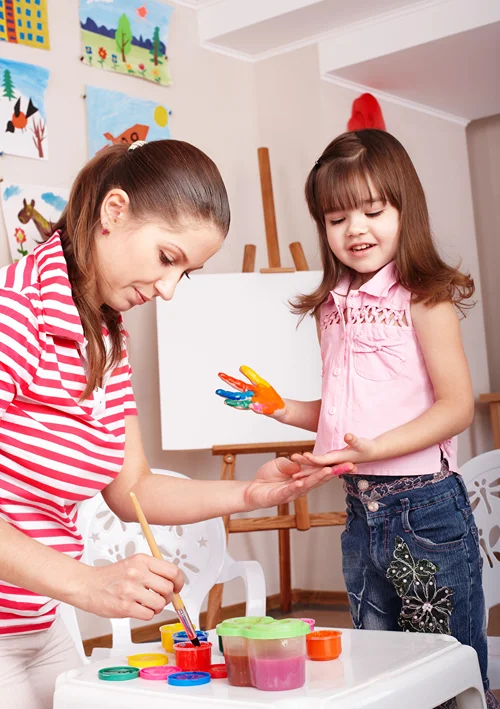Parents ensuring Safety and Comfort for Toddlers During Outdoor Play
Outdoor activities are crucial for toddlers as they develop their physical, social, and emotional skills. However, outdoor activities by themselves are not the only important factor, keeping toddlers comfortable and safe is equally essential. Parents and guardians should consider the clothes and gear that enable their children to have fun while being active.
Today, we’ll look into how you can keep your toddlers comfortable and safe outdoors from choosing the right gear to establishing an appropriate space. There are many activities such as park outings, nature walks, and water play, each of them allows children to be active while ensuring their safety.
Fostering a Safe Space for Outdoor Play for Your Toddler
The next step involves making sure that the outdoor setting is as safe as it can be for your toddler. Wherever you are, be it in a park, backyard or even near a beach, securing a safe space to play is very important for their safety.
Look for possible Risks in the Outdoor Setting
Regardless if it’s a public park or a personal backyard, make sure to check for any injury prone risks like sharp objects, broken equipment, or uneven ground that can result in accidents. Ensuring a hazard free and smooth space is absolutely necessary.
Supervise The Children and Clearly Define Areas of Play
It can be very easy for toddlers to roam around, especially in large open spaces, which is why there should be clearly set boundaries for playing, accompanied with close supervision to keep the toddlers safe whilst enjoying themselves.
Appropriate Play Equipment for Your Child’s Age
Please remember to select appropriate toys and equipment for that specific age for your toddler. Climbing toys or swings for example, should be age appropriate for their use in order to prevent any injuries.
Encouraging Children’s Active Play
Apart from taking measures to foster safety, the environment is expected to encourage aid to aid in the physical and active exploration of the toddlers, thus building their muscle strength and coordination.
For additional child safety tips during outdoor activities, visit the CDC’s Child Safety Guide.
Embrace the Outdoors
Remember that walks around the neighborhood remove the boringness of life and can also be fun and a good learning experience. Encourage them to animal watch, let them climb trees, pick flowers, and explore their surroundings, as this helps them appreciate the world around them.
Patio and Yard Games
Games such as capture the flag, ball catch, and even scavenger hunts are ideal for energetic toddlers. These activities will help improve their social interaction and motor skills. They can play these fun games outside or in the gym.
Water Fun
Water play can be very engaging for toddlers on hot sunny days. Always remember to watch your child closely when near water whether it’s in your backyard, a lake or a pool. Proper children’s swimwear will allow children to move freely while having fun in the water.
Addressing Unique and Wild Behavior in Children
While toddlers thrive on routine, they should also have some downtime from the rigors of structure. It’s perfectly acceptable to let them run wild outdoors, so long as it complements their specific tasks for the day.
Let Them Have Some Flexibility with Their Schedule
Although outdoor play is a must, make sure to allow some wiggle room in their daily schedule. If your child is tired, sick, or simply not in the mood, let them have some quiet time or relax with a book.
Choosing the Appropriate Clothes for a Toddler Going Outdoors
Toddlers go outside to play and explore and during this, they should be wearing clothes tailored for their comfort and safety. As for active toddlers, one should consider clothes that enable unrestricted movement whilst providing protection from extreme weather conditions.
Select Fabrics That Are Lightweight and Breathable.
For toddlers, trees, and outdoor activities, fabrics such as cotton prove to be the most efficient. These fabrics tend to keep your toddler cool and dry, preventing overheating. Heavy weight or clothing that hinders movement should be avoided entirely.
Ensure The Safety Changes Are Incorporated into Toddler’s Clothing.
Besides the comfort factor, safety should be given equal weightage. Non-slip soles placed on shoes should be an option to help your toddler prevent falls, thicker hats to shield sensitive skin from the sun, and pants with stretchable waistbands that ensure maximum movement should all be essential choices.
When heading outdoors for an active day, dresses for toddlers make for the perfect choice. These dresses keep your toddler comfortable while assisting in movement during play.
Never Skip Over Water Safety and Swimwear.
Proper kids swimwear is a must for toddlers who love water activities. Swimwear with built in UV protection provides sensitive skin protection from the sun, and added stretch means freedom of movement so getting the fit just right is important. Browse here for an assortment of kid friendly swimwear.
Rest Encouragement: Give them Breaks
If your toddler is active? Don’t forget to schedule regular break sessions. Rest is especially important in between sessions of active play so ensure that they take plenty of fluids and sit back for a while before indulging in more action packed outdoor fun.
Conclusion: Parents in 2025 Need to Know
For children around the age of 2 years old, outdoor activity is a must. It will encourage a lifelong pursuit of fun outside, which is healthy for all ages. As we step in 2025, ensuring toddlers are dressed in comfortable and safe clothing such as a supportive toddler dress and a swimsuit for water related fun takes them one step closer to being healthy and active outdoors. Be sure to monitor them, scan the surroundings for any possible dangers, and let them engage in unstructured and imaginative play to develop important physical and social skills.
The good news is that with the right outlook outdoor play could be a fun time for the entire family, creating cherished memories while nurturing your toddler’s development.









